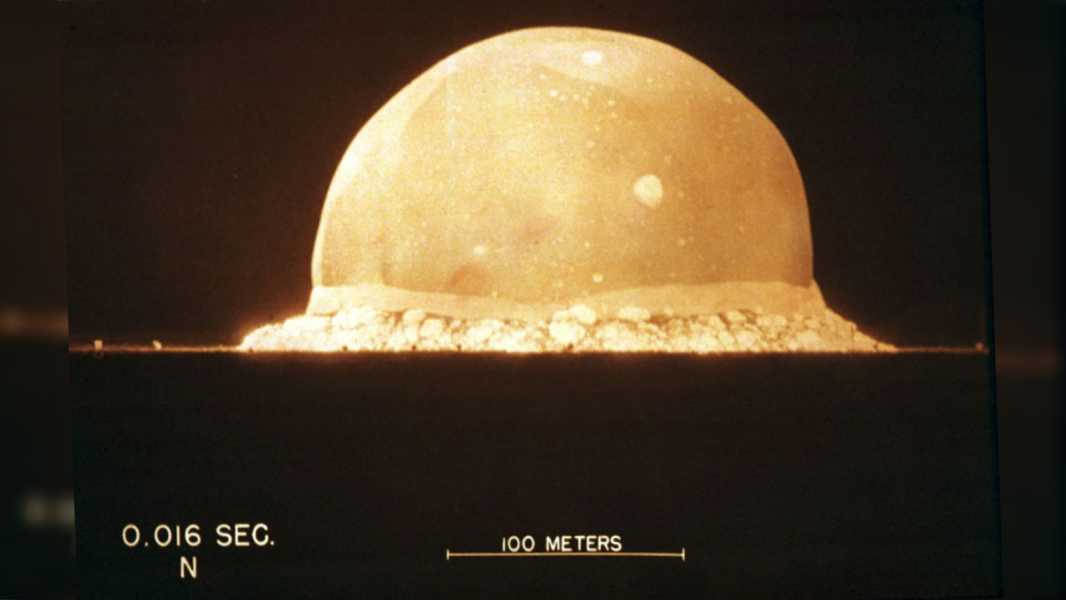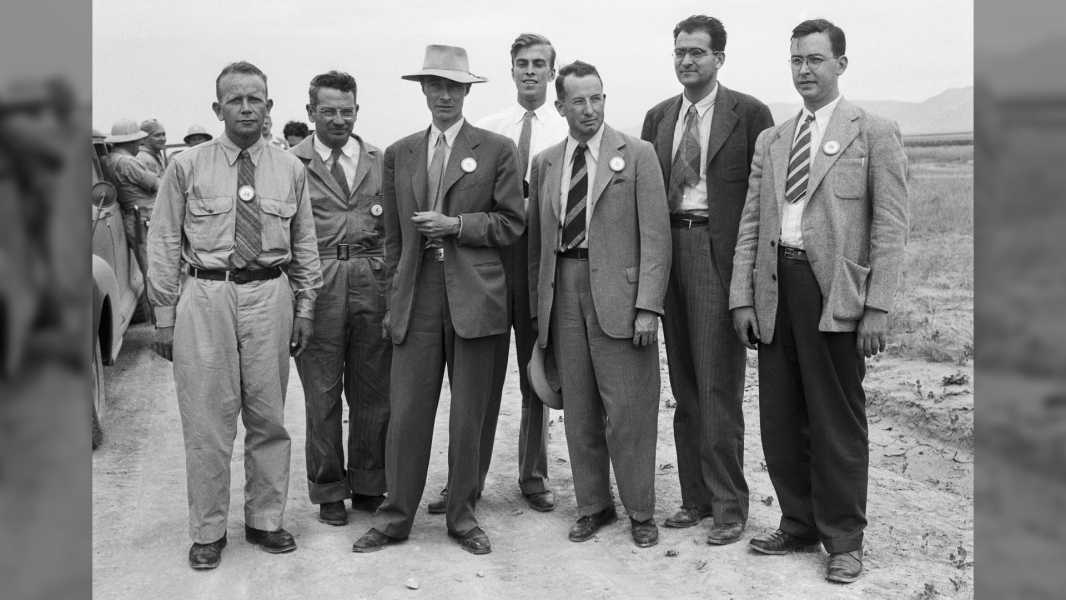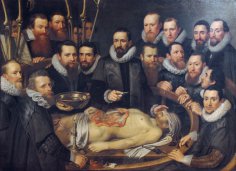
The first atomic bomb was tested early in the morning of July 16, 1945, at the Trinity Test Site in New Mexico. (Photo credit: Image on display at the Bradbury Science Museum, copy by Joe Radle)
In honor of the premiere of Christopher Nolan's biopic Oppenheimer, here's an excerpt from the book on which the film is based, American Prometheus: The Triumph and Tragedy of J. Robert Oppenheimer (Knopf, 2005) by Kai Bird and Martin J. Sherwin.
RICHARD FEYNMAN was 20 miles from the Trinity test site when he was handed a pair of tinted glasses.
He figured he couldn’t see anything through his sunglasses, so he climbed into the cab of a truck parked across from Alamogordo. The truck’s windshield would protect his eyes from the harmful ultraviolet rays, and he might actually be able to see the flash. Still, he instinctively ducked as a brilliant flash lit up the horizon. When he looked up again, he saw the white light turn yellow, then orange: “A big ball of orange, the center of which was so bright, becomes a ball of orange that starts to rise and billow a little, blackening at the edges, and then you see it’s a big ball of smoke with flashes in it, fire going out, heat.” A minute and a half after the explosion, Feynman finally heard a deafening bang, followed by a roll of artificial thunder.
James Conant expected a relatively quick flash of light. But the white light filled the sky so completely that for a moment he thought “something had gone wrong” and “the whole world was going up in flames.”
“I could feel the heat on my face from twenty miles away.”
Bob Serber, American physicist
Bob Serber was also 20 miles away, lying face down with a piece of welding glass to his eyes. “Sure enough,” he wrote later, “the moment my arm got tired and I lowered the glass for a second, the bomb exploded. I was completely blinded by the flash.” When his vision returned 30 seconds later, he saw a bright purple column rising to an altitude of 20,000 or 30,000 feet. “I could feel the heat on my face 20 miles away.”

At a nuclear test site near Alamogordo, New Mexico, nuclear scientists measure radioactivity in baked sand particles.
Sourse: www.livescience.com





